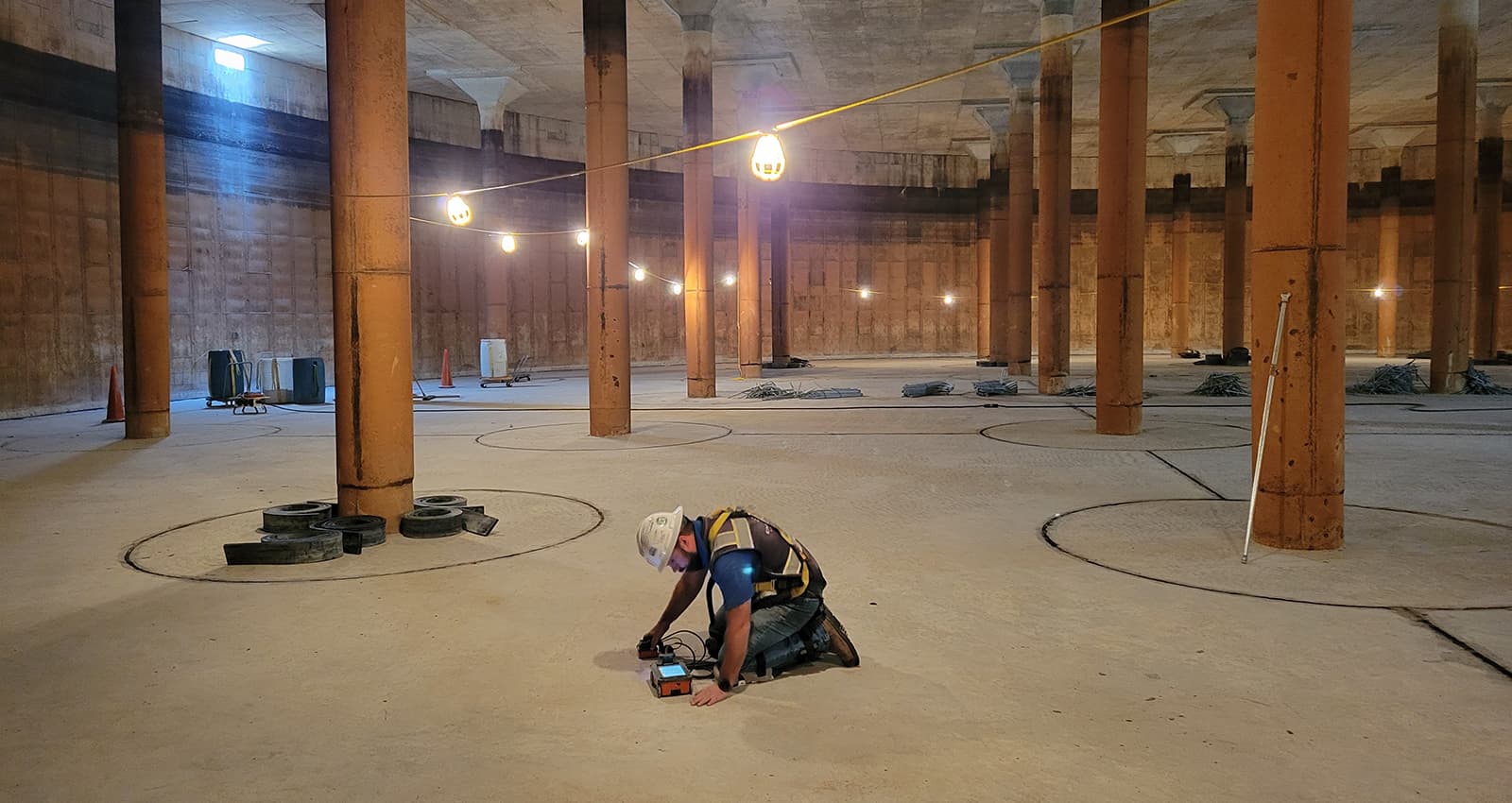
Ground penetrating radar (GPR) is the go-to technology for locating items embedded in concrete slabs. It can tell you where structural supporting items are located, such as rebar or post tension cables, as well as any utility lines, such as water lines, gas pipes, or electrical conduit. Even if you already have a document in hand that tells you where all of these types of things are located, it can still be a good idea to have a GPR concrete scan completed prior to disturbing the concrete, since the document may not be 100% accurate.
GPR is a nondestructive scanning technology that sends pulses of electromagnetic energy into the concrete slab. A technician will then examine the return signal to determine where embedded hazards are located within the slab. Special software is often used to help translate the signals into images, so the technician can better differentiate between the types of hazards they are dealing with.
Ever since GPR became widely available, it has been the technology of choice for concrete scanning because it is safe, affordable, and effective at locating embedded hazards. While concrete X-ray can produce clearer results, the downsides of this technology is that it is expensive, time-consuming, and emits harmful radiation, which requires that the space be evacuated prior to the scan.
Yes, GPR concrete scanning will cost you some money, but the fee for the scanning service will almost certainly be less than any repairs you would have to make as the result of hitting something embedded in the concrete that you didn’t expect. In addition, you will avoid any downtime that will result from having to make those repairs, as well as having to find an alternate place to cut into the concrete. Disturbing concrete in any way without first conducting GPR concrete scanning is a gamble you probably don’t want to take!
There is likely a GPR concrete scanning service in your area—and probably even multiple services if you live in a somewhat populated area. As you research companies, it can be wise to look for one that also utilizes other types of nondestructive scanning devices, just in case the results of the GPR scan are not as clear as you might have hoped. For example, if you are working with newly poured concrete, a different type of scanning tool may be needed, since GPR struggles to deliver accurate results in wet environments. Other tools may also need to be brought in if you need more of a structural analysis of your concrete slab—one that reveals where any cracks, voids, or cavities are located.
If you are in Southern California (San Diego, Riverside, San Bernardino, Orange, or Los Angeles Counties), Enhanced Scanning is a reputable company that specializes in GPR scanning and other subsurface solutions.







